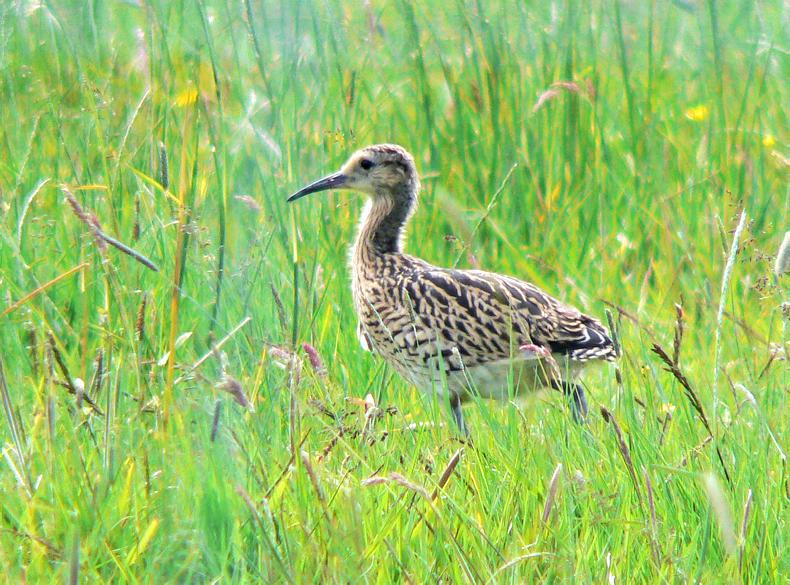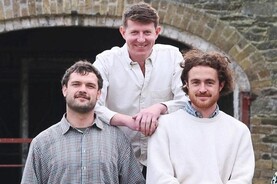A population model derived from known parameters predicts that in the absence of any action, the curlew will become extinct as a breeding species in Ireland within 10 years, a new report has said.
The report, by the curlew task force, was launched on Friday and has a made number of recommendations in order to conserve the bird.
The first national survey of breeding curlew in Ireland was co-ordinated by the National Parks and Wildlife Service (NPWS) between 2015 and 2017, with the population estimate derived at 138 pairs.
This is an estimated decline of 96% since the population estimate generated by the Bird Atlas of 1988-1991.
Saving the curlew from extinction in Ireland is one of the greatest conservation challenges faced by the country, authors of the report said.
Farming
Under farming, the report recommends that the high-level requirements for the bird be developed within future Rural Development Programmes.
It recommends that annual surveys are carried out to monitor the population and identify where curlew are located, urgently address the loss of curlew habitat and develop, finance, target and adapt proactive measures through bespoke management schemes in order to save the bird.
It also recommended:
Implement habitat measures (including the adoption of sensitive farming and non-productive investments).Deliver effective nest protection.Landscape-scale approaches (including farm clusters and collaborative working).Consider wider positive benefits to biodiversity/landscape of adopting these approaches.Consolidate and utilise data and experience available from various sources, including the CCP, EIP, BnM, gun clubs, local projects, etc.“Curlew, in general, benefit from an extensive-type approach to farming, with low intensity grazing, late cut meadows and low input of chemicals and nutrients," the report states.
“The curlew task force recognises that modern agriculture has, overall, not suited the species' requirements, with greater intensification, mechanisation, specialisation and conversion of natural and semi-natural habitats to unsuitable conditions either through intensification or in some cases through abandonment, all within 50 years,” according to the report.
Forestry and bogs
An increase in the cover of commercial forestry is one of the most significant changes that curlew have experienced within their preferred landscape, the report says.
To combat further declines in numbers as a result of afforestation, the report recommends an increase in the screening zone around curlew areas to provide greater certainty of avoidance of impact on curlew and to ensure all planting applications are reviewed by ornithologists with curlew expertise and knowledge.
Meanwhile, approximately two-thirds of curlew in Ireland are believed to breed on bogs.
In order to protect these areas, the report recommends that curlew are identified where they are breeding in active turbary areas and that a blueprint be designed for proactive and positive engagement with turf cutters/plot owners.
It also recommends that Bord na Móna continues to survey and monitor curlew and propose conservation actions on their estate.
Other key recommendations:
Undertake an audit of land use in curlew territories.Undertake research on breeding curlew, with particular reference to examining the effectiveness of conservation measures and with specific reference to the landscape of Ireland.Develop a national species action plan for curlew - including a steering group which delivers 'sign-up-to' actions and monitoring.Work with partners in Northern Ireland to achieve biogeographic consensus on curlew conservation effort. Read more
'Further work needed to save the Curlew'
Farmer Writes: three sets of twins and curlews
Corncrakes making a comeback
A population model derived from known parameters predicts that in the absence of any action, the curlew will become extinct as a breeding species in Ireland within 10 years, a new report has said.
The report, by the curlew task force, was launched on Friday and has a made number of recommendations in order to conserve the bird.
The first national survey of breeding curlew in Ireland was co-ordinated by the National Parks and Wildlife Service (NPWS) between 2015 and 2017, with the population estimate derived at 138 pairs.
This is an estimated decline of 96% since the population estimate generated by the Bird Atlas of 1988-1991.
Saving the curlew from extinction in Ireland is one of the greatest conservation challenges faced by the country, authors of the report said.
Farming
Under farming, the report recommends that the high-level requirements for the bird be developed within future Rural Development Programmes.
It recommends that annual surveys are carried out to monitor the population and identify where curlew are located, urgently address the loss of curlew habitat and develop, finance, target and adapt proactive measures through bespoke management schemes in order to save the bird.
It also recommended:
Implement habitat measures (including the adoption of sensitive farming and non-productive investments).Deliver effective nest protection.Landscape-scale approaches (including farm clusters and collaborative working).Consider wider positive benefits to biodiversity/landscape of adopting these approaches.Consolidate and utilise data and experience available from various sources, including the CCP, EIP, BnM, gun clubs, local projects, etc.“Curlew, in general, benefit from an extensive-type approach to farming, with low intensity grazing, late cut meadows and low input of chemicals and nutrients," the report states.
“The curlew task force recognises that modern agriculture has, overall, not suited the species' requirements, with greater intensification, mechanisation, specialisation and conversion of natural and semi-natural habitats to unsuitable conditions either through intensification or in some cases through abandonment, all within 50 years,” according to the report.
Forestry and bogs
An increase in the cover of commercial forestry is one of the most significant changes that curlew have experienced within their preferred landscape, the report says.
To combat further declines in numbers as a result of afforestation, the report recommends an increase in the screening zone around curlew areas to provide greater certainty of avoidance of impact on curlew and to ensure all planting applications are reviewed by ornithologists with curlew expertise and knowledge.
Meanwhile, approximately two-thirds of curlew in Ireland are believed to breed on bogs.
In order to protect these areas, the report recommends that curlew are identified where they are breeding in active turbary areas and that a blueprint be designed for proactive and positive engagement with turf cutters/plot owners.
It also recommends that Bord na Móna continues to survey and monitor curlew and propose conservation actions on their estate.
Other key recommendations:
Undertake an audit of land use in curlew territories.Undertake research on breeding curlew, with particular reference to examining the effectiveness of conservation measures and with specific reference to the landscape of Ireland.Develop a national species action plan for curlew - including a steering group which delivers 'sign-up-to' actions and monitoring.Work with partners in Northern Ireland to achieve biogeographic consensus on curlew conservation effort. Read more
'Further work needed to save the Curlew'
Farmer Writes: three sets of twins and curlews
Corncrakes making a comeback






 This is a subscriber-only article
This is a subscriber-only article










SHARING OPTIONS: